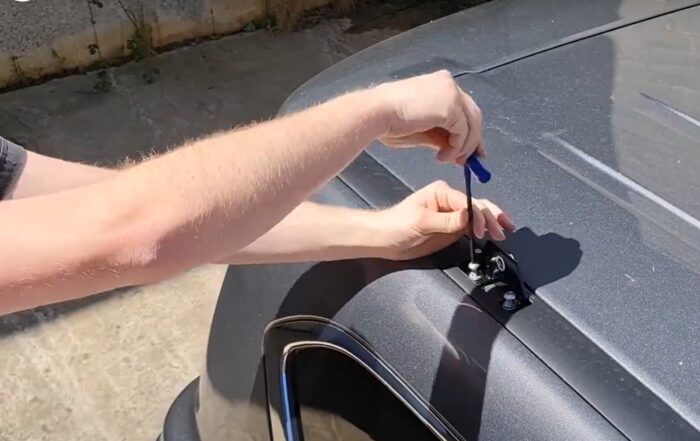
Why it’s important to avoid excessive roof loads on your roof rack
May 11, 2023
When it comes to finding additional storage space for your SUV, dual cab ute or commercial van, a roof rack can be a practical solution. However, it’s crucial to understand that loading your vehicle’s roof requires careful consideration. While the roof may seem spacious and flat, it lacks the same weight-bearing capacity as the vehicle’s designated cargo area. Overloading the roof can lead to safety hazards, legal issues, and even insurance claim complications. To help you avoid these problems, here are some practical tips to keep in mind.
1. Roof Weight Rating
Every vehicle has a maximum roof-load rating, usually expressed in kilograms. You can find this rating in the owner’s manual or by contacting the manufacturer. While most SUVs, dual cab utes, and vans can legally carry up to 100kg on their roofs, it’s essential to understand that this is a dynamic rating specifically designed for when the vehicle is in motion. The roof’s stationary or static load-bearing capacity may be higher, allowing for activities like loading and unloading, temporary work platforms, or rooftop camping. It’s crucial to differentiate between these two capacities to ensure you don’t exceed the roof’s limitations.
2. Roof Rack Weight Rating
In addition to the vehicle’s roof load rating, a roof rack also has maximum load ratings set by their manufacturers. It’s important to pay attention to these numbers and choose a tradie rack that meets your needs. For example, if your vehicle has a roof load rating of 100kg but you install a roof rack with a weight capacity of only 60kg, the rack becomes the determining factor in how much load you can carry on your roof. Additionally, remember that the weight of the roof rack itself adds to the overall roof load. Therefore, knowing the unladen weight of your rack is crucial for accurate load calculations.
3. Consider the Centre of Gravity
The location of your vehicle’s centre of gravity (CG) plays a critical role in its handling and stability. The CG represents the point in space where the vehicle’s weight is centred, affecting its behaviour during cornering, acceleration, and braking. Overloading the roof raises the CG and increases the risk of instability, body roll, and even vehicle tipping. This becomes particularly important when navigating off-road terrain, where sudden tilting can lead to dangerous situations. Choosing lightweight and sturdy roof racks made of materials like quality aluminium can help lower the CG and allow for more equipment within legal limits.
Carrying excessive weight on your vehicle’s roof poses significant risks, including legal consequences, compromised performance, and safety hazards. It’s crucial to minimise roof loads and ensure that you never exceed the roof and roof rack load ratings. By adhering to these guidelines and understanding the limitations of your vehicle, you can enjoy the convenience of a roof rack while maintaining safety on the road.
Most Recent Posts
How to install a Tradesman Roof Rack
Jonah Samuel2024-06-24T14:48:57+10:00June 24, 2024|
Specialists in roof racks for Toyota vehicles
Jonah Samuel2024-06-24T16:02:25+10:00May 23, 2024|
Top 5 Victorian High Country 4WD Tracks
Jonah Samuel2024-05-07T16:25:59+10:00May 7, 2024|
Why roof racks make noise and how to prevent it
Jonah Samuel2024-03-26T20:13:13+10:00March 26, 2024|
Everything you need to know before buying roof racks
Jonah Samuel2024-03-26T20:05:50+10:00March 26, 2024|
Customisation Options for Roof Racks
Jonah Samuel2024-03-01T16:10:30+10:00March 1, 2024|







